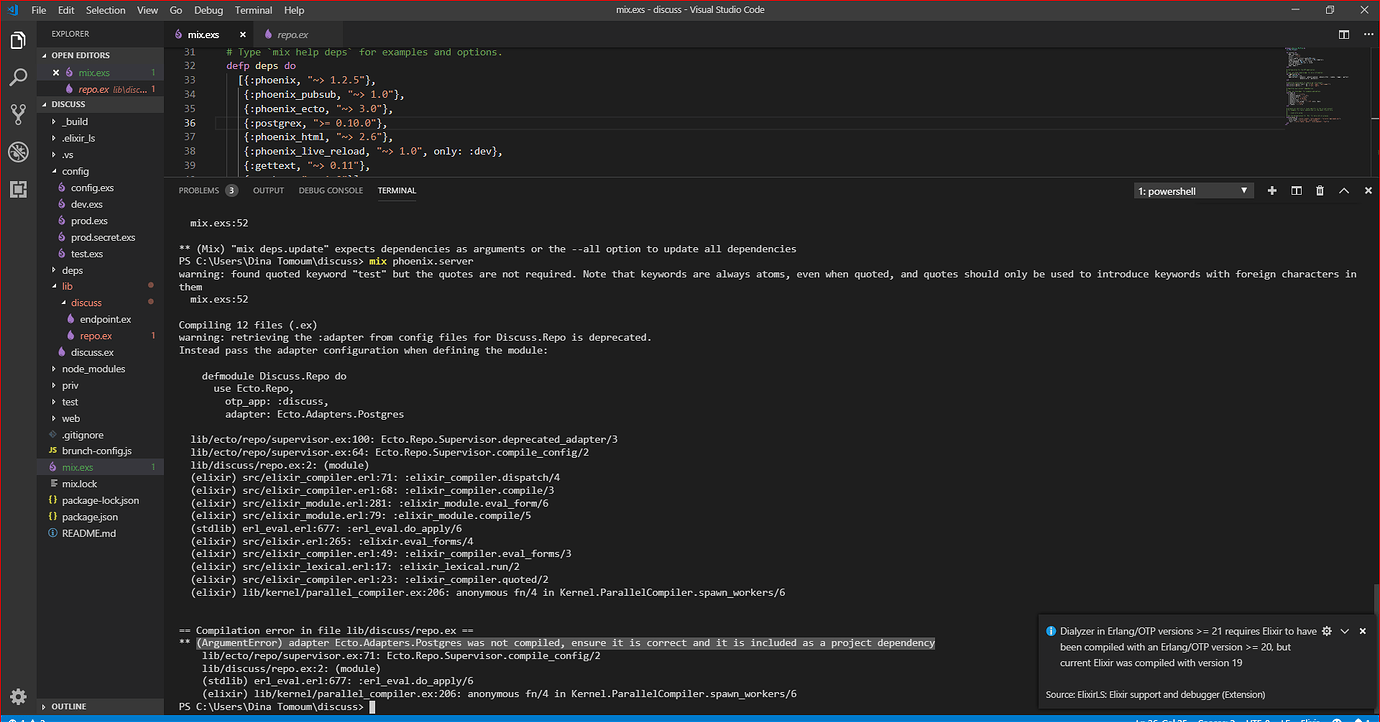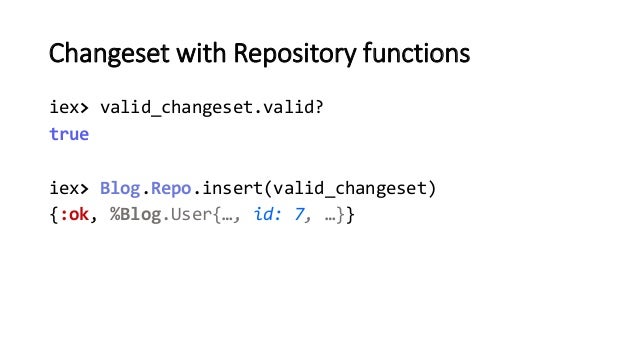

Featured on Meta Sunsetting Winter/Summer Bash: Rationale and Next Steps. The Overflow Blog Computers are learning to decode the language of our minds. elixir phoenix-framework or ask your own question. In our case, ecto can convert our string to a date so we get the desired result. def older_than_13(:birth_date, %Date)Ĭase Date. One has to handle it manually, with a help of /4. The thing to take from this is takes the fields on the data and compares it to what the schema says it should be, then attempts to coerce it to that type if it can.
#ELIXIR ECTO CHANGESET UPDATE#
The changeset lets Ecto decouple update policy from the schema, and. If the user is too young, it returns an error of the following form: When they do, if your single update policy is tightly coupled to a schema, it will hurt. It returns an empty list if everything is okay. If the check constraint fails, the db throws. At that point, the db executes the check constraint to determine if the insert will succeed or not. If the changeset is valid, then Ecto actually tries to do the insert in the db. Then the "older_than_13" function will get the current date and check if the birth date is 13 years earlier. The changeset () function applies all the validators that you specify and thereby determines if the changeset is valid. Since there is no "birth_date" field in the database schema for "users" we'll specify it as a virtual field in the ecto schema. We'll add a birth_date field to the Users schema so that it will be present in the changeset. The function will take a field of :birth_date, which will be passed in from the changeset. Glad to help In respect to your question - you could tackle that by extracting all validation rules to separate function (like validate), that would accept a changeset, which you could pipe through all validating functions, if that makes sense.The great thing about Elixir/Ecto is that you can compose whatever you need with plain functions. To illustrate this, we'll create an arbitrary validation called "older_than_13".

validate_change(cset, name, function): adds whatever errors to the changeset that function returns, with the label of the atom passed into name.Each takes a changeset as its first parameter and returns a changeset that will have newly-added. We can also create custom validations that validate a changeset based on any arbitrary function. Ecto provides a number of functions for creating validations. name end withminimum (18, 5.0) When interpolating values, you may want to explicitly tell Ecto what is the expected type of the. validate_format(cset, field, regex): adds an error to the changeset if the atom passed into field doesn't match the regular expression passed into regex. External values and Elixir expressions can be injected into a query expression with : def withminimum (age, heightft) do from u in 'users', where: u.validate_length(cset, :password, min: 8). validate_length(cset, field, options): adds an error to the changeset if the atom passed into field doesn't match the length specified by options.I have an input with an attribute of type'number', however this attribute does not fully work for Internet Explorer 11 so I need back end validation to have browser compatability.

Thats what the timestamps () macro is for.
#ELIXIR ECTO CHANGESET CODE#
Your migration defines the schema for the insertedat and updatedat fields, but your code needs to provide those fields when the model is being inserted into the table.


 0 kommentar(er)
0 kommentar(er)
